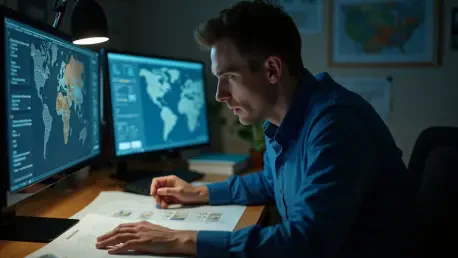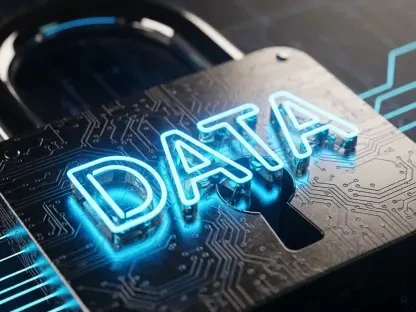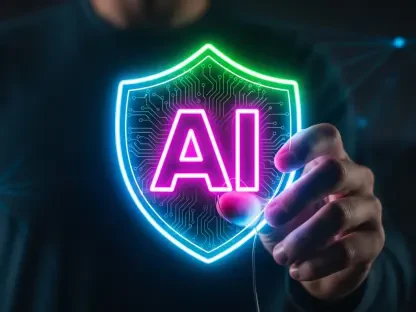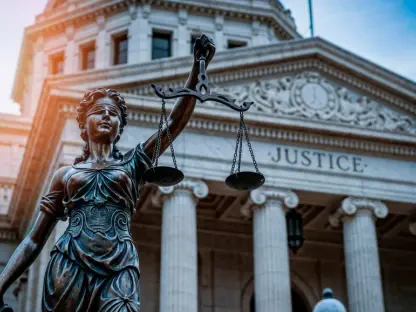In today’s rapidly evolving legal landscape, the importance of open-source intelligence (OSINT) has grown exponentially. Desiree Sainthrope, a renowned expert in global compliance and international law, offers her insights into the intricacies of OSINT in legal proceedings. From the motivations driving her involvement in digital investigations to the challenges of institutionalizing OSINT as a credible tool in court, Sainthrope sheds light on this complex subject. Her expertise provides a vital understanding of how OSINT is reshaping forensic science and accountability on a global scale.
What motivated you to become involved in digital investigations and justice, particularly focusing on open-source intelligence (OSINT)?
My journey into digital investigations began with a fascination for the potential that publicly available data holds in unveiling truths that might otherwise remain hidden. The combination of technology and law provides a unique space where justice can be pursued more transparently and effectively. OSINT represents a democratizing shift in intelligence gathering, making it accessible to anyone with the skills and ethical considerations to navigate it. This openness intrigued me and inspired my involvement in pushing for accountability and transparency through these tools.
Can you explain the concept of open-source intelligence and how it differs from other types of intelligence gathering?
Open-source intelligence is fundamentally about collecting and analyzing information that is publicly accessible, without resorting to covert methods or state-restricted information. Unlike traditional intelligence, which often relies on secret or classified data, OSINT thrives on transparency, leveraging resources like social media, public records, and academic publications. This readily available information can provide valuable insights but also requires rigorous verification to ensure accuracy and reliability, given its public nature.
What specific challenges does the decentralized nature of OSINT present for its use in courtrooms?
The decentralized nature of OSINT means there’s no single governing body or consistent framework that oversees its practices. This fragmentation can lead to uneven standards in data collection and verification, posing significant challenges when introducing OSINT as evidence in court. Courts require rigor and reliability, and without standardized procedures, it can be difficult for OSINT-derived information to consistently meet legal requirements for admissibility.
How does the absence of standardized methodologies impact the admissibility of OSINT in legal proceedings?
Without standardized methodologies, it becomes exceedingly challenging to assess the authenticity and probative value of OSINT in a legal setting. Inconsistencies across various cases can lead to skepticism among legal professionals about the reliability of such evidence. This lack of uniformity hampers the ability of OSINT to be effectively leveraged in court proceedings, as judges and attorneys must navigate diverse and sometimes incompatible practices.
What role does expert evidence play in the integration of OSINT in judicial processes?
Expert evidence is crucial in bridging the gap between OSINT data and its judicial application. Experts play a vital role in explaining the technical processes involved in gathering and interpreting open-source data. Their testimony can help demystify the information for the court, ensuring that the evidence is not only understood but also meets the necessary legal standards. Experts provide the court with assurance regarding the validity and integrity of the evidence presented.
Why is institutionalization important for enhancing the credibility and effectiveness of OSINT in legal contexts?
Institutionalization is essential because it introduces consistency and reliability across the board. By establishing shared standards and professional recognition, we can enhance both the credibility of OSINT evidence and its utility in court. Institutional frameworks provide guidelines for best practices, accreditation of experts, and methodologies that ensure the evidence collected is robust and legally sound. This structured approach is key to integrating OSINT more effectively into the justice system.
Can you provide examples of how OSINT has been successfully used in international investigations?
One of the most compelling examples of OSINT’s application is during conflict zones, such as the Syrian civil war. Activists and researchers used publicly available data like social media posts and satellite images to document and verify incidents of violence and abuses, offering crucial evidence at a time when traditional investigative methods were challenged. More recently, in Ukraine, OSINT has played a central role in documenting war crimes and human rights violations, providing invaluable insights that support accountability efforts.
How did the Syrian civil war highlight the potential of OSINT for documenting atrocities and promoting accountability?
The Syrian civil war marked a pivotal moment for OSINT as activists and journalists utilized social media, satellite imagery, and other open data sources to document atrocities in real time. This ability to gather and corroborate evidence while events unfolded demonstrated the potential of OSINT to bypass limitations faced by on-the-ground investigators in conflict zones. It underscored how vital real-time, open-source data could be in holding perpetrators accountable and informing the international community.
What were some of the limitations faced by early OSINT efforts during the Syrian civil war in terms of evidentiary admissibility and legal credibility?
The early application of OSINT during the Syrian civil war encountered several hurdles, primarily regarding legal credibility and evidentiary admissibility. Information often lacked comprehensive validation due to varying standards and methodologies used by different organizations. This made it difficult for OSINT data to be included in formal legal proceedings, as it didn’t always meet the stringent requirements needed to be considered reliable evidence. Moreover, the decentralized and unregulated nature of these efforts complicated their integration into formal legal channels.
Could you explain the significance of initiatives like the Berkeley Protocol and Leiden Guidelines in the formalization of OSINT?
The Berkeley Protocol and Leiden Guidelines represent significant steps towards formalizing OSINT practices, providing much-needed frameworks for the collection and preservation of online content. They set minimum standards and ethical considerations, helping to legitimize OSINT within legal contexts. While they don’t fully resolve the issue of practical implementation, they provide a foundational guide for handling digital open-source investigations, which is crucial for their acceptance in judicial processes.
How has the invasion of Ukraine in 2022 influenced the development of standardized OSINT approaches?
The invasion of Ukraine accelerated the efforts to standardize OSINT as the global community relied heavily on open-source data to document wartime events. This urgency prompted increased collaboration between civil society actors and institutional stakeholders to refine methodologies that ensure OSINT is legally viable. The conflict underscored the importance of having uniform standards, compelling the international community to develop more robust frameworks to accurately document and assess such critical events.
What are the Global Rights Compliance (GRC) Basic Investigative Standards, and how do they relate to OSINT?
The Global Rights Compliance Basic Investigative Standards aim to elevate the quality and legal viability of evidence collected during investigations, including those utilizing OSINT. They serve as a guide for evidence collection, helping practitioners ensure that their methods meet the expectation of legal systems. Although the standards are broader in scope, they include principles applicable to OSINT, emphasizing the need for verification and consistency in data collection practices.
Can you describe the Bellingcat–GLAN methodology and its contributions to OSINT practices?
The Bellingcat–GLAN methodology is a comprehensive set of procedures developed to enhance OSINT investigations, particularly in post-2022 Ukraine contexts. It aligns with the Berkeley Protocol’s principles, offering practical techniques for data discovery, verification, and archiving. While region-specific, it exemplifies how structured methodologies can improve the accuracy and reliability of open-source investigations, paving the way for more consistent application in legal settings.
How do efforts like “Evaluating Digital Open Source Imagery: A Guide for Judges and Fact-Finders” assist in bridging the gap between OSINT practitioners and legal decision-makers?
The guide assists by educating judges and legal fact-finders on the intricacies of digital open-source imagery, enhancing their understanding of OSINT’s relevance and limitations within legal proceedings. While it doesn’t regulate OSINT practice, it provides vital insights into the evidentiary and methodological aspects, fostering judicial literacy and encouraging informed decision-making. This helps build confidence in the judicial use of OSINT-derived evidence.
What are the current challenges in identifying and classifying qualified OSINT experts for court proceedings?
One of the toughest challenges is the absence of formal accreditation or academic programs that certify OSINT experts. This lack of standardization makes it difficult to identify individuals whose qualifications meet the necessary legal thresholds. Often, expertise is derived from informal experiences, which complicates the process of formally recognizing practitioners who can reliably testify as expert witnesses in court.
How does the lack of formal academic programs or training pathways affect the recognition of OSINT experts?
Without formal academic paths, OSINT experts often lack the traditional credentials expected in court, which can hinder their acceptance as credible witnesses. Many practitioners have developed their skills through self-directed study and field experience. The absence of standardized qualifications adds to the ambiguity surrounding their status, complicating their involvement in legal processes and undermining the potential roles they could play.
What are the specific expert requirements at the International Criminal Court, and how do they relate to OSINT practices?
The International Criminal Court (ICC) requires expert witnesses to have established credentials, typically through formal education and accreditation in recognized fields. However, many OSINT practitioners do not fit this mold, acquiring their expertise through unconventional routes. This disconnect presents challenges, as these practitioners may be excluded from contributing their valuable insights due to a lack of formalized recognition, despite their proficiency in open-source investigations.
How do domestic legal systems, such as Ukraine’s, differentiate between experts and specialists, and what challenges does this pose for OSINT practitioners?
In Ukraine, the distinction between experts and specialists hinges on accreditation and the ability to testify in court. To be considered an expert, one must be listed in the Register of Certified Experts, which OSINT practitioners often struggle to achieve due to non-traditional training. While specialists can assist judges, they face hurdles in evidentiary admissibility without recognized credentials. This regulatory framework limits the participation of skilled OSINT practitioners in legal processes.
How do language, legal procedures, and evidentiary standards create additional hurdles for OSINT practitioners in court?
Language barriers, diverse legal procedures, and different evidentiary standards can complicate the capacity of OSINT practitioners to effectively engage in court proceedings. These factors demand a high level of adaptability and familiarity with localized legal contexts, which many practitioners may find challenging. As a result, the nuances of OSINT evidence might be misinterpreted or undervalued in court, thereby affecting the outcome of cases.
How does the continuous evolution of OSINT tools and methods pose challenges for traditional legal systems?
The rapid development of new OSINT tools and methods often outpaces the ability of traditional legal systems to integrate these advancements. Legal frameworks tend to evolve more slowly, which can result in outdated procedures that fail to accommodate new types of evidence or methodologies. Without regular updates and collaboration between technologists and legal experts, there’s a risk that new OSINT techniques might not be fully utilized or properly understood by the courts.
Why is it important to establish a unified OSINT association, and what role would it play?
Establishing a unified OSINT association is vital for creating a standardized approach to open-source investigations. Such an organization would provide certification, set global standards, and foster collaboration among practitioners. It would bridge the gap between OSINT specialists and the legal system, enhancing the reliability and legal acceptance of open-source evidence. This centralized body would also ensure consistency and trust in OSINT practices, promoting accountability and reliability in legal investigations.
What would be the key functions and goals of the proposed International Association of Open-Source Investigators (IA-OSI)?
The International Association of Open-Source Investigators (IA-OSI) would aim to standardize methodologies and certify practitioners, ensuring high-quality, consistent, and reliable OSINT outputs. It would serve as a platform for knowledge exchange, ethical guidelines adoption, and collaborative efforts across borders. The association would advocate for the integration of OSINT in legal frameworks, promote diversity within the community, and support equitable legal proceedings by providing resources to all legal actors, including defense teams.
Do you have any advice for our readers?
My advice is to remain vigilant and informed about how technology and law are intertwining, especially regarding open-source intelligence. The ability to critically assess and verify information is becoming increasingly crucial as digital landscapes evolve. For those interested in contributing to these developments, consider joining discussions around standardizations, seeking educational resources, and advocating for institutional recognition of the value that OSINT brings to global justice and accountability.









